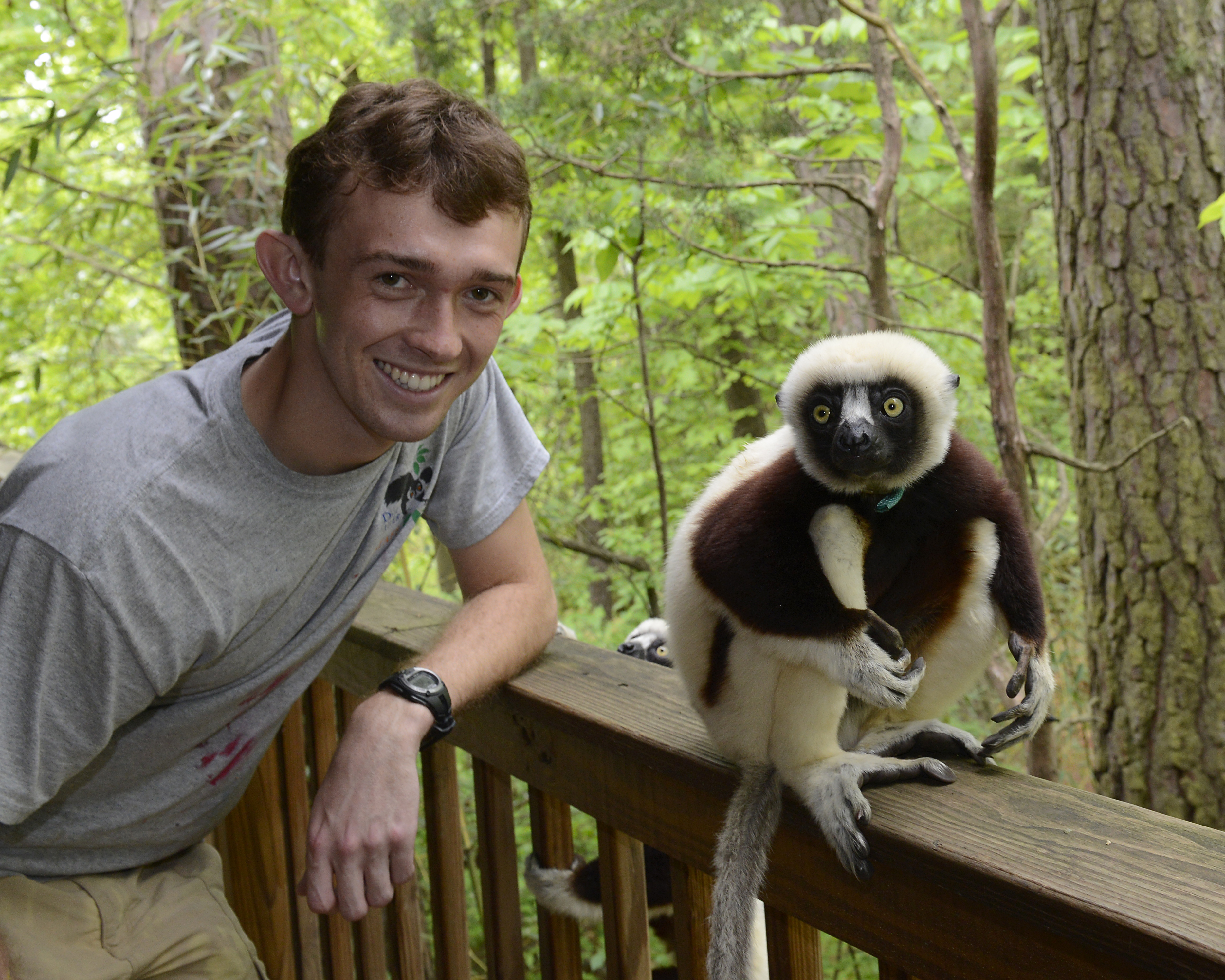Brandon Semel: Lemur research dreams become reality for Global Change researcher
This story was written in the spring of 2020 by GRAD 5144 (Communicating Science) student Gary Lupton as part of an assignment to interview a classmate and write a news story about his research.
Children often dream of being part of the worlds they see on television and read about in books. For many kids, that means having special powers, traveling to magical lands, and saving the day by protecting those who can’t protect themselves.
Brandon Semel’s childhood dream was working with the fantastic creatures he saw in nature documentaries: lemurs!

Perhaps this career aspiration is not too surprising, given the fact Semel grew up in a home with a father who works as a Natural Heritage Biologist. Semel’s father even sent a story about lemurs that Semel wrote as a child to the Duke Lemur Center, a world-renowned research and conservation facility associated with Duke University. Following a campus visit and a family trip to Madagascar, Semel was committed to studying the endangered primates.
After completing a bachelor’s degree at Duke University and a master’s degree at Northern Illinois University, Semel looked to Virginia Tech for his Ph.D. He is currently in the fifth year of his program in the Department of Fish and Wildlife Conservation and is part of the university's Interfaces of Global Change program.
Semel’s research focus is on the golden-crowned sifaka, a species of lemur. This species lives in a small area of Madagascar, about the size of Montgomery County surrounding Virginia Tech—under 400 square miles. Their habitat in Madagascar serves as a transitional area between rain forests and dry deciduous forests. Semel hopes to use his research findings to better understand the impact climate change has on species like the golden-crowned sifaka.

Thanks to Semel’s work, researchers and environmentalists now know that the golden-crowned sifaka has seen a 50% decline in its population over the past 10 years. For a species that was already considered endangered, this is an alarming trend.
Researchers like Semel hope to develop ways to protect the golden-crowned sifaka by studying their genetic make-up, using satellite imaging to understand how its population interacts with the environment, and working with local governments and other organizations to enact social and legal changes that protect the lemurs.
Perhaps Semel is living out the childhood dream so many share: being a superhero who travels to magical lands to protect and save those who can’t protect themselves.


